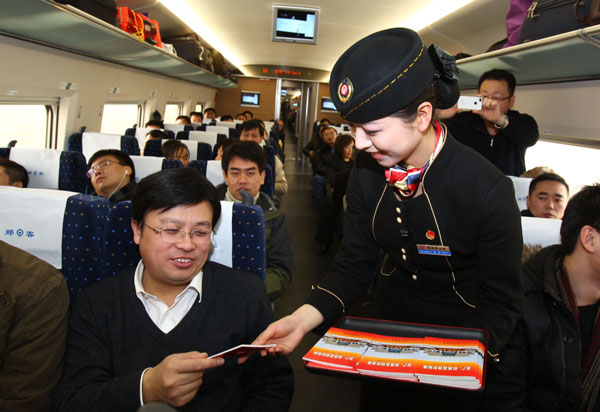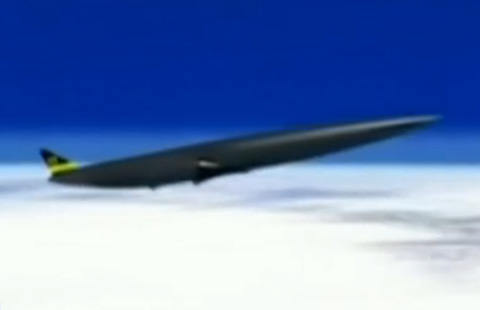How the new high-speed railway came on track
By Hu Yongqi and Xiang Mingchao in Zhengzhou and Yang Wanli in Beijing (China Daily) Updated: 2012-12-27 09:50All HSR trains are taken to the workshop after they have covered 4,000 km or have been in service for 48 continuous hours. When the kilometers add up to 30,000 km, the trains are taken out of service for an intensive revamp.
"When a train arrives at our workshop, the maintenance engineers check it from top to bottom, including the wheels, the upper and lower electrical circuits and the high-voltage equipment. Each train is worked on by a team of 14, which has to complete all the checks and repairs in two hours and 35 minutes," said Ma Tao, deputy director of the workshop.
The maintenance engineers test 16 wheels in 30 minutes. If they encounter any damage, the engineers are only allowed to begin repairs after receiving permission from the quality-control inspectors. On the night of Dec 20, the engineers discovered that a link connecting the wheels was close to breaking point. A quality-control inspector took two minutes to assess the damage and then gave permission for the part to be replaced. He recorded the entire process on his camera and gave the old component a number for recycling.
"Usually, small parts are more easily broken. Wheels, which are 86 cm in diameter and can last for at least six months, are replaced when the diameter reduces to 79 cm, which takes about the same time," said Luo.
Engineer Cai Quan said he walks at least 15 km every night to fix trains on a predetermined line. "My wife complains that my shoes wear out much faster than my neighbors'," he said. "But that's my job."
More than 100 cameras have been installed in the workshop to monitor all the checkups and repair procedures. Engineers swipe their cards at the entrance which bears the slogan, "Zero tolerance to technical problems", and then all their moves in the workshop can be recorded. A giant screen in the monitoring center shows which engineer is working on which train. When the engineers finish their tasks, a video is prepared to aid investigations in the event of any subsequent accidents.
Drivers are the key
The railway system has upgraded equipment and new technologies. At Zhengzhou East Railway Station, a new system has been built to verify high-speed train tickets through personal ID cards. Even if the passenger has lost their ticket, the system will still allow them to ride the train.
On the fifth floor of a building next to Zhengzhou Railway Station, new drivers practice in a lifesize simulation of a driver's cabin as the rails unfold on an enormous white screen in front of them. Once initiated, the system can offer the drivers eight courses of action to follow and provides changing routes on the screen. A speed limit is set and the drivers learn to take the appropriate course of action when the light on the panel changes color.
Guo Xiansheng, a 33-year-old who now drives the route between Zhengzhou and Wuhan, capital of Hubei province, said the system has helped him follow standard operating procedures.
 |
|
An attendant hands a brochure to a passenger on the Beijing-Guangzhou high speed train which went into operation on Wednesday. Wang Zhongju / China News Service |
- Activist accused of subversion pleads guilty
- Health certificate steps reduced for foreigners
- Guangdong police bust illegal fund-raising gang
- Himalayan rail route endorsed
- Beijing lawyer Zhou Shifeng jailed for subversion
- China opens S China Sea website
- Ministry issues draft rules for car-hailing business
- 700 officials punished by green teams
- Hangzhou learns the language of summit success
- Panda twin births boost the hopes for survival










